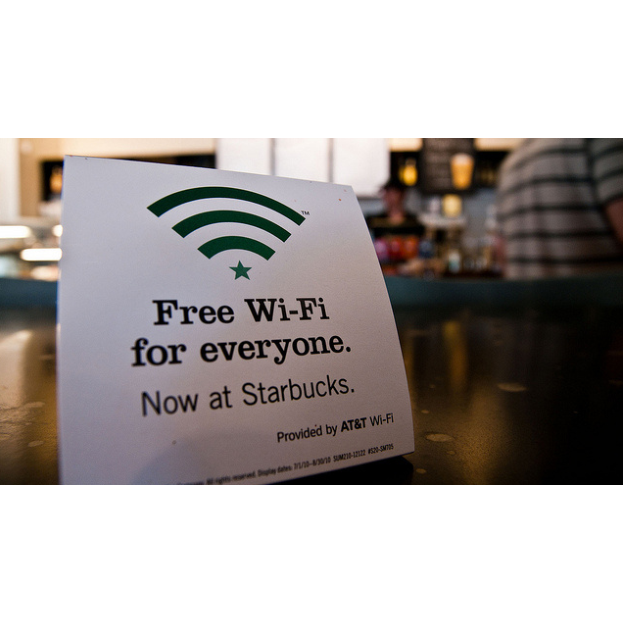What’s Wrong with Using Public Wi-Fi?
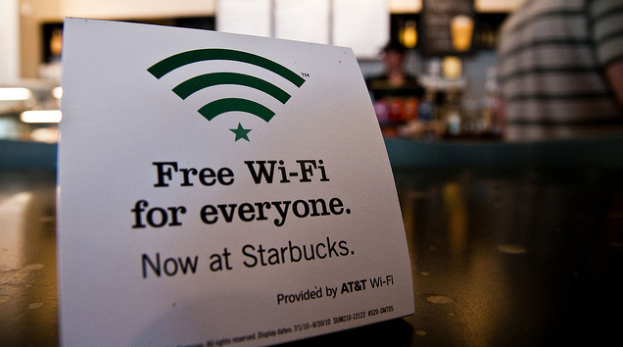
Most of us put a lot of effort into finding free Wi-Fi, but public Wi-Fi networks have their own
share of problems—particularly that it’s very insecure. Even if a Wi-Fi network has a password,
that doesn’t keep you safe from other people on the network. It’s notoriously easy for any of
them to see what you’re doing and, in some cases, steal personal information or passwords.
Luckily, there’s a lot you can do to stay safe: follow this guide whenever you’re on a public
network, and you should be a-ok. Photo by Ken Hawkins.
How to Stay Safe on Public Wi-Fi Networks
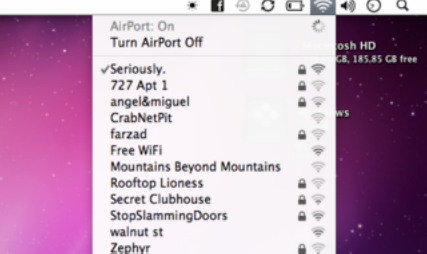
Just because most wireless routers have a firewall to protect you from the internet doesn’t mean
you’re protected from others connected to the same network. Lots of wireless hotspots these
days are completely unencrypted, usually so they’re easier to connect to (baristas don’t need to
be giving out the internet password to everyone that walks in). However, this leaves you
unprotected against malicious users in the same coffee shop, so there are a few settings you
should always make sure to tweak when you’re connected to a public network. We’re going to
show you which settings are the most important ones, as well as how to automatically change
your settings to the appropriate level of security every time you connect to a public network.
The Settings
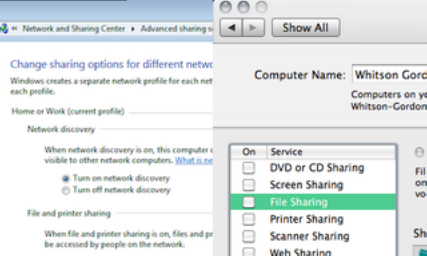
1. Turn Off Sharing
When you’re at home, you may share files, printers, or even allow remote login from other
computers on your network. When you’re on a public network, you’ll want to turn these things
off, as anyone can access them—they don’t even need to be a hacker, and depending on your
setup, some of that stuff probably isn’t even password protected. Here’s how to turn off sharing:
In Windows: Open your Control Panel, then browse to Network and Internet -> Network and
Sharing Center, then click Choose Homegroup and Sharing Options -> Change Advanced
Sharing Settings. Once here, you should definitely turn off file and printer sharing, and you may
as well turn off network discovery and Public folder sharing. Some of this is done automatically
by Windows if you specify the network as public (more on this later).
In Mac OS X: Go to System Preferences -> Sharing and make sure all the boxes are unchecked.
You’ll also want to turn off network discovery, which will be in the same place. This will prevent
others from even seeing your machine on the network, meaning you’re less likely to be targeted.
On Windows (as I mentioned), it’s just another check box under advanced sharing settings. On
OS X, it will be called “stealth mode” and be under your firewall’s advanced settings (see below).
2. Enable Your Firewall.

Most OSes come with at least a basic firewall nowadays, and it’s a simple step to keeping
unwanted local users from poking at your computer. You may already be using a firewall, but just
in case, go into your security settings (in Windows under Control Panel -> System and Security –
> Windows Firewall; and on Mac under System Preferences -> Security -> Firewall) and make
sure your firewall is turned on. You can also edit which applications are allowed access by
clicking on “allow a program or feature” in Windows and “advanced” in OS X. Your firewall is not
an end-all, be-all protector, but it’s always a good idea to make sure it’s turned on.
3. Use SSL Whenever Possible
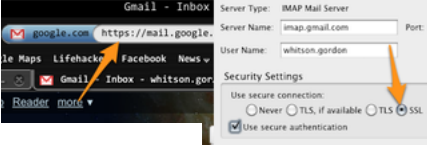
Regular web site connections over HTTP exchange lots of plain text over the wireless network
you’re connected to, and someone with the right skills and bad intent can sniff out that traffic.
It’s not that big of a deal when the text is some search terms you entered at Lifehacker, but it is
a big deal when it’s the password to your email account. Using HTTPS (for visiting web sites) or
enabling SSL (when using applications that access the internet, such as a mail client) encrypts
the data passed back and forth between your computer and that web server and keep it away
from prying eyes.
Some sites will do it automatically, but keep an eye on the address bar and make sure the “s” in
“https” is always there when you’re exchanging sensitive information. If it disappears, you
should log out immediately. Note that if the sensitive browsing can wait, you might as well just
do it at home—no reason in risking more than you have to. Other sites will default to HTTP
connections, but support HTTPS if you manually type it in. Gmail, for example, will allow you to
log in using HTTPS, and you can specify in your Gmail Settings whether you want it to use
HTTPS automatically in the future. (Go to Settings, find the Browser connection setting, and set
to Always use https.)
If you access your email from a desktop client such as Outlook or Mail.app, You’ll want to make
sure that your accounts are SSL encrypted in their settings. If not, people could not only
theoretically read your emails, but also get your usernames, passwords, or anything else they
wanted. You’ll need to make sure your domain supports it, and sometimes the setup might
require different settings or ports—it’s not just a matter of checking the “use SSL” box—so
check your email account’s help page for more details. If it doesn’t support SSL, make sure you
quit the application when you’re on an insecure public network..
4. Consider Using a Virtual Private Network

Unfortunately, not all sites offer SSL encryption. Other search engines and email providers may
still be vulnerable to people watching your activity, so if you use one of these sites frequently (or
really just want the extra protection), you may want to try using a VPN, or virtual private network.
These services let you route all your activity through a separate secure, private network, thus
giving you the security of a private network even though you’re on a public one. We’ve detailed
how to set up a VPN with Hamachi, though there are a number of great services—check out our
Hive Five for best VPN tools for more ideas. If all that’s a bit too complicated, you can always go
with previously mentioned Hotspot Shield, which is a fairly popular app that will run in the
background and set up the VPN automatically.
5. Turn It Off When You’re Not Using It
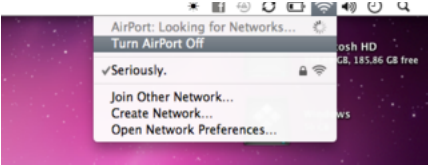
If you want to guarantee your security and you’re not actively using the internet, simply turn off
your Wi-Fi. This is extremely easy in both Mac and Windows. On a Mac, just click the Wi-Fi icon
in the menu bar and select the turn off AirPort option. On Windows, you can just right-click on
the wireless icon in the taskbar to turn it off. Again, this isn’t all that useful if you need the
internet, but when you’re not actively using it, it’s not a bad idea to just turn it off for the time
being. The longer you stay connected, the longer people have to notice you’re there and start
snooping around.
How to Automate Your Public Wi-Fi Security Settings
You don’t want to have to manually adjust all of these settings every single time you go back and
forth between the coffee shop and your secure home network. Luckily, there are a few ways to
automate the process so you automatically get extra protection when connected to a public Wi-
Fi network.
On Windows
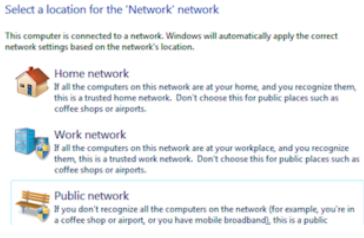
When you first connect to any given network on Windows, you’ll be asked whether you’re
connecting to a network at your home, work, or if it’s public. Each of these choices will flip the
switch on a preset list of settings. The public setting, naturally, will give you the most security.
You can customize what each of the presets entails by opening your Control Panel and
navigating to Network and Sharing Center -> Advanced Sharing Settings. From there, you can
turn network discovery, file sharing, public folder sharing, media streaming, and other options on
or off for the different profiles. P
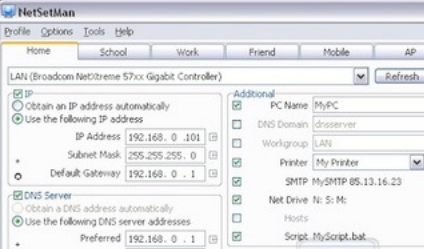
That’s a good start, but what if you want a bit more control? Previously mentioned NetSetMan is
a great program to customize your network profiles for different networks; you choose your IP
address, DNS server, or even run scripts (opening the window for pretty much any action) every
time you connect to one of your preset networks.
On OS X
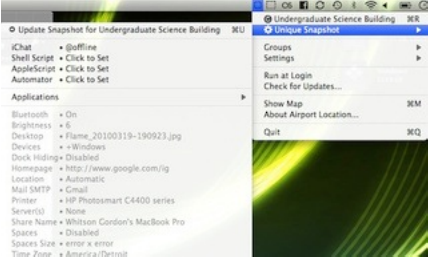
On OS X, you don’t have a lot of options for automating your network preferences, but
previously mentioned Airport Location will do everything you could possibly want and more.
With it, you can turn on your firewall, turn off SMTP mail, connect to a VPN, and a whole lot
more, all depending on the network you’ve connected to. Heck, you can even change your
desktop background for each given network, as well as run Applescripts for those functions that
just aren’t built in to the app.
In Your Browser
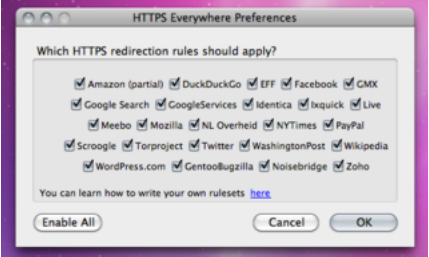
The previously mentioned HTTPS Everywhere Firefox extension automatically chooses the
secure HTTPS option for a bunch of popular web sites, including the New York Times, Twitter,
Facebook, Google Search, and others, ensuring secure HTTPS connections to any supported
web site, every time you visit. You can even add your own to their XML config file. Note that as a
Firefox extension, this works on Windows, Mac, and Linux.
Consider a Safety-First Approach
If you’re a real road warrior, you may find yourself adding so many profiles that automating your
safe settings at every step along the way may seem like a lot of work. While most chains like
Starbucks or McDonald’s should have the same names for each of their Wi-Fi networks (and
thus your profiles will carry over), a better approach may be to make your more secure settings
the default for your system, and create just one profile for your home network. Thus, by default,
file sharing would be turned off, your firewall would be at its most secure state, and so on—then,
when you return home to your protected network, you can have Airport Location or NetSetMan
turn your less secure settings on.
This isn’t all-encompassing by any means, but should give you a good quick checklist of things
you should do every time you connect to a public network. There are certainly a number of other
things you could do (such as setting up a SOCKS proxy over SSH), but these steps will take you
a long way on the road to security when you’re browsing on those public hotspots.

